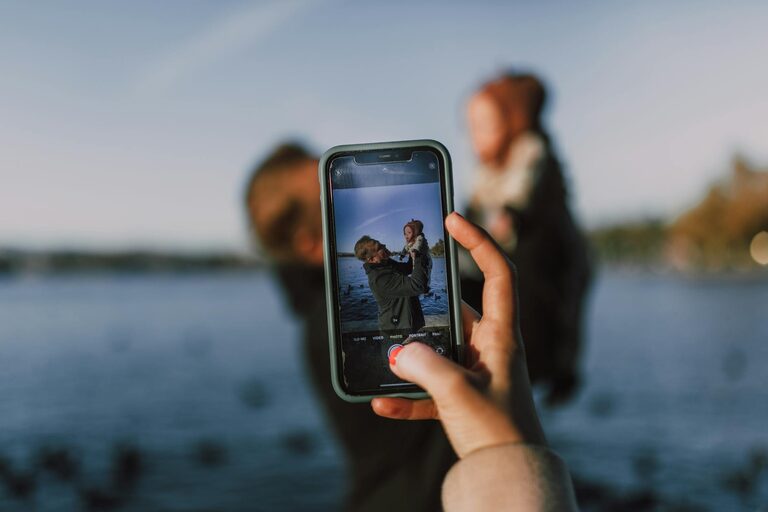Taking great photos with your phone is easier than ever thanks to advancements in camera technology. Whether you want to capture beautiful landscapes, memorable moments, or creative shots, learning a few basic tips can make a huge difference. If you’re new to phone photography, this guide will help you improve your skills and take better photos every time you tap the shutter.
Understand Your Phone’s Camera Features
Before diving into photography techniques, take some time to explore your phone’s camera app. Most smartphones come with a variety of modes and settings designed to enhance your photos:
– HDR (High Dynamic Range): Helps balance bright and dark areas in a photo.
– Grid lines: Overlay a grid to help you compose images using the “Rule of Thirds.”
– Focus and exposure control: Tap the screen to focus and adjust brightness.
– Portrait mode: Creates a blurred background effect for striking portraits.
– Zoom options: Optical or digital zoom helps you get closer to a subject.
By familiarizing yourself with these features, you’ll be able to use your camera more creatively and effectively.
Keep Your Lens Clean
It sounds simple, but a dirty lens can cause blurry, hazy photos. Phone lenses tend to collect fingerprints, dirt, and dust easily. Use a soft microfiber cloth to gently wipe the lens before taking pictures. This small step can lead to noticeably sharper images.
Use Natural Light Whenever Possible
Lighting plays a crucial role in photography. Natural light tends to create more flattering and vibrant photos compared to indoor artificial lighting. Here are some tips:
– Shoot during the golden hour—shortly after sunrise or before sunset—when light is soft and warm.
– Avoid harsh midday sunlight that can create strong shadows and highlights.
– Position your subject so that light falls on their face or the focal point in an appealing way.
– For indoor photos, place subjects near windows to take advantage of natural daylight.
Experimenting with different lighting conditions will help you understand how light affects your photos.
Compose Your Shots Thoughtfully
Composition refers to how elements are arranged within your frame. Good composition can turn an ordinary photo into an eye-catching image. Use these techniques to improve composition:
1. Apply the Rule of Thirds
Imagine your screen divided into a 3×3 grid. Place important elements along these lines or their intersections instead of in the center. This technique creates balanced and dynamic photos.
2. Look for Leading Lines
Leading lines are natural lines in your scene—like roads, fences, or beams—that guide the viewer’s eye toward the main subject. Using them can add depth and interest to your photos.
3. Simplify Your Background
Too many distractions in the background can take attention away from the subject. Find a plain or uncluttered background to make your subject stand out.
4. Experiment with Angles and Perspectives
Try shooting from different heights and angles—get low to the ground or shoot from above. Changing perspective can reveal new, creative ways to capture the same scene.
Hold Your Phone Steady
Blurry images often result from camera shake. To keep your photos sharp:
– Hold your phone with both hands for better stability.
– Rest your elbows on a solid surface if possible.
– Use the volume button or a self-timer instead of tapping the screen to trigger the shutter.
– For extended exposures or low light, consider a smartphone tripod or stabilizer.
Avoid Using Digital Zoom
Most phone cameras use digital zoom, which crops the image and reduces quality. Instead of zooming in, try to physically move closer to your subject. If that’s not practical, take the photo at full zoom and crop it afterward—it usually yields better results.
Edit Your Photos Thoughtfully
Post-processing can enhance your photos, but it’s important not to overdo it. Use built-in editing tools or simple apps to adjust:
– Brightness and contrast
– Saturation and color balance
– Sharpness and clarity
– Cropping and straightening
Moderate edits help your photos look polished while keeping them natural.
Practice Regularly and Experiment
The best way to improve your phone photography is to practice often. Challenge yourself to take photos in different environments, lighting, and with various subjects. Try new techniques and review your images critically to learn what works best.
Final Thoughts
Taking better photos with your phone doesn’t require expensive gear or complicated skills. By learning your camera’s features, paying attention to light and composition, and practicing regularly, you’ll be amazed at how much your photos improve. So grab your phone and start capturing the world in a fresh, creative way today!
Happy shooting!

